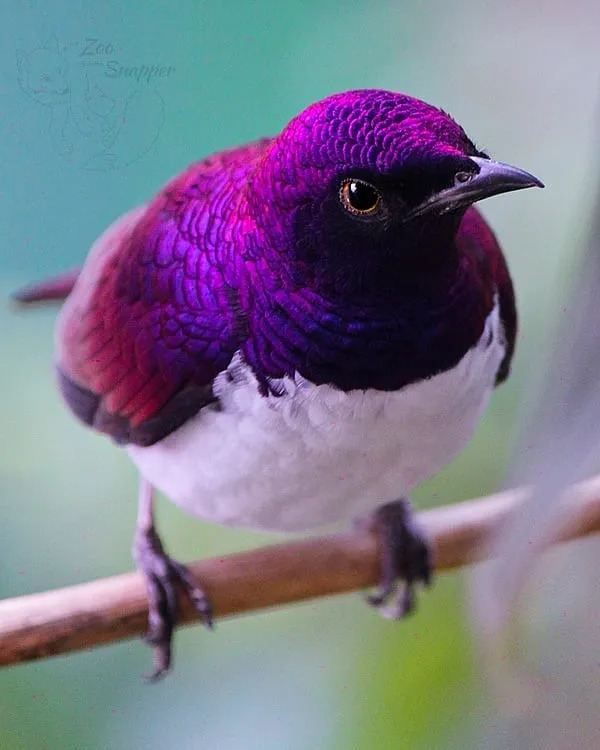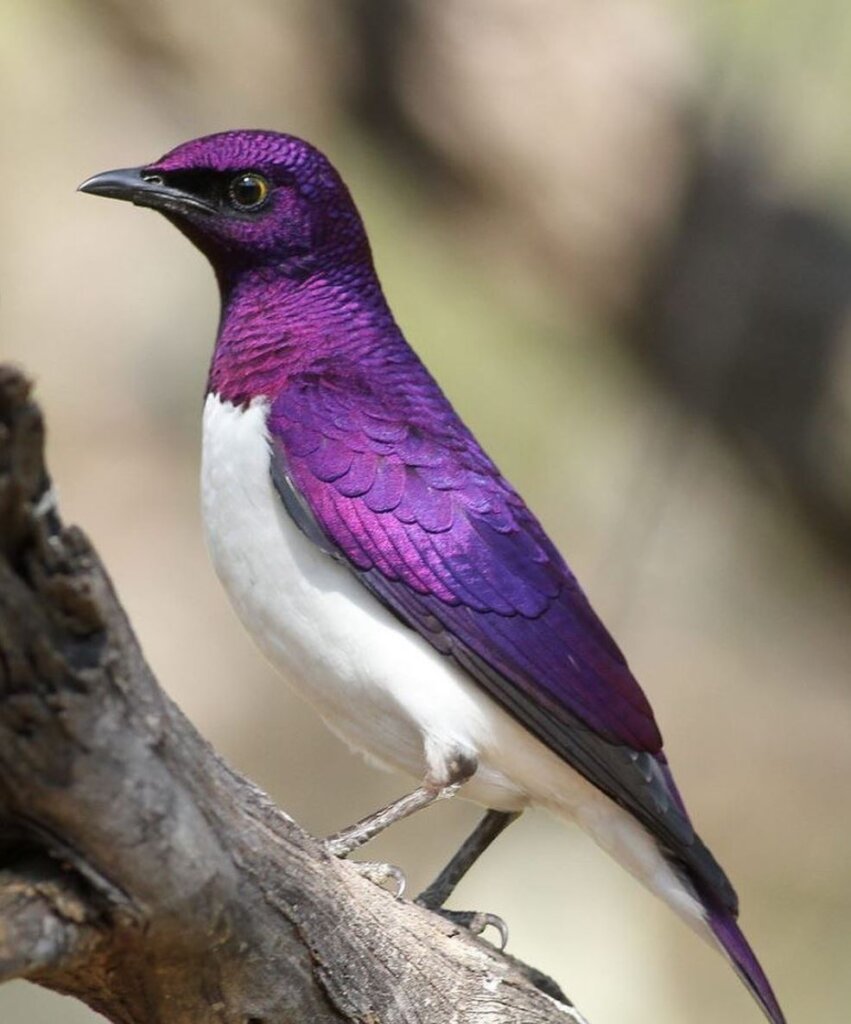The Violet-Backed Starling is a breathtakingly beautiful bird, adorned with dazzling violet shimmer that is impossible to overlook!

This particular bird is on the smaller side, measuring about six inches in size and weighing roughly an ounce. It is worth noting that only the male of this species boasts a beautiful white breast and a vibrant iridescent violet back.

The Violet-Backed Starling can be spotted in various parts of Sub-Saharan Africa, avoiding the thick rainforests of the Congo Basin.

These birds are often spotted in wooded areas like forests, forest edges, open woodlands, and clearings. They primarily eat seeds, fruits, berries, and insects found in the upper parts of trees.

The Violet-Backed Starling is known for its migratory behavior, although in certain regions, you may also find some that choose to stay year-round.

It is common for a female to construct her nest at a height of two meters above ground level, typically in the branches of a tree. The nest is typically crafted from fresh green leaves and a mixture of animal waste.

Afterwards, she carefully sits on a nest of two to four eggs, each adorned in a striking combination of blue and reddish-brown markings, incubating them for a period of 12 to 14 days.

Luckily, the female bird doesn’t have to handle all the responsibilities alone when caring for her offspring. The male bird also assists in feeding the chicks until they are ready to fly on their own after around 21 days. In the wild, the patterns and colors on a species are crucial for attracting mates and communicating within and between species. This means that the coloring of animals is significant for both inter and intra-species interactions.

The individuals of this species display such contrasting appearances that it’s hard to believe they belong to the same species! The male flaunts his vibrant violet suit with confidence, while the female prefers to camouflage herself, making it a challenge to locate her.

The male bird’s purple back stands out in contrast to its white belly, while the females and young birds of the same species have streaked brown and white bellies, resembling a thrush.

All of them have a common feature of a dark-colored bill and striking yellow eyes.

Female and juvenile birds display a brown head and back, along with a white belly featuring brown markings. Both genders have black beaks and legs, which are less vibrant than those of male Starlings.

Take a moment to enjoy the sweet melodies of the birds singing happily down below.


